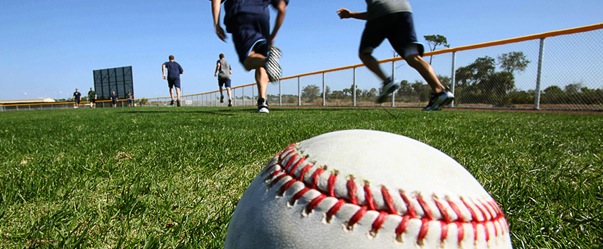
There is still a strong trend among coaches today to stick with long distance running as a form of baseball conditioning. Whether running poles on the warning track, or testing the useless 2-mile time, baseball coaches still believe that their players need an aerobic base to make it through nine innings of baseball.
However, if we really look at the game, we can see that baseball is a power and sprint-based sport. The action on the field occurs quickly, with bursts of acceleration and top speed followed by longer periods of rest. So when considering baseball conditioning, coaches should try to mimic the demands of the sport. Running poles or other long distances does not properly address the needs of the ballplayer. In a long distance run, an athlete will use moderate intensity over a long duration, thereby training his body to operate at a slower pace. The human body is very efficient at adapting to the stimuli placed upon it. So we have to be aware what we are asking the body to do. Do we want it to execute tasks slowly or quickly on the baseball field?
If you want to be quick and explosive, your conditioning needs to involve sprint work, sled pushes, medicine ball circuits, and other power-based movements. The amount of rest taken between various bouts is important too. In a sport where you can achieve nearly full recovery before you make another pitch, take another swing, or advance to the next base, you should be taking nearly full rest between sprints or other conditioning sets.
Here are 3 sample baseball conditioning routines better than running poles. First, complete a solid dynamic warm-up, or do these routines at the end of a good practice.
Build-Up Sprints or Flying Starts
Build-up sprints (or Flying Starts) begin with the baseball player already in motion. In the example below, you will run a total of 60 yards, but only the second 30 yards at 100% effort. Use the foul line as your starting point. Set up cones at 30 and 60 yards. First, perform a couple of light sprints at the end of your dynamic warm-up. When you perform the Build-Up sprints, begin your run at 50 to 75% effort. As you hit the halfway mark, increase your speed to 100% effort.
- 2 30-yard sprints at 50% effort
- 8 60-yard Build-Up sprints: first 30 yards at 75% effort, second 30 yards at 100% effort
After each sprint, use your walk back to the starting line as your rest.
Shuttle Runs
Shuttle runs allow you to work on your ability to start and stop and your ability to quickly change direction. Set up two cones anywhere from 10 to 20 yards apart. Begin at the first cone and sprint full speed to the second cone. Slow down, plant your foot and change direction, then sprint back to the start. You complete one rep by performing the total assigned distance between the cones. Here’s a good series where the total distance may is similar from rep to rep, but the distance between the cones varies, allowing for more or less change of direction.
- 2 x 30 yards – cones 10 yards apart
- 2 x 60 yards – cones 15 yards apart
- 2 x 60 yards – cones 20 yards apart
- 2 x 60 yards – cones 10 yards apart
Rest one to two minutes between sets.
Sled Pushes
Sled pushes are great for working on leg drive. You can load the sled with heavy weight to work more on your leg strength or you can go lighter to focus more on speed. Either way, sled pushes are a challenge. Depending on your current level of conditioning, shoot for three to six sets of 20-30 yards per push.
